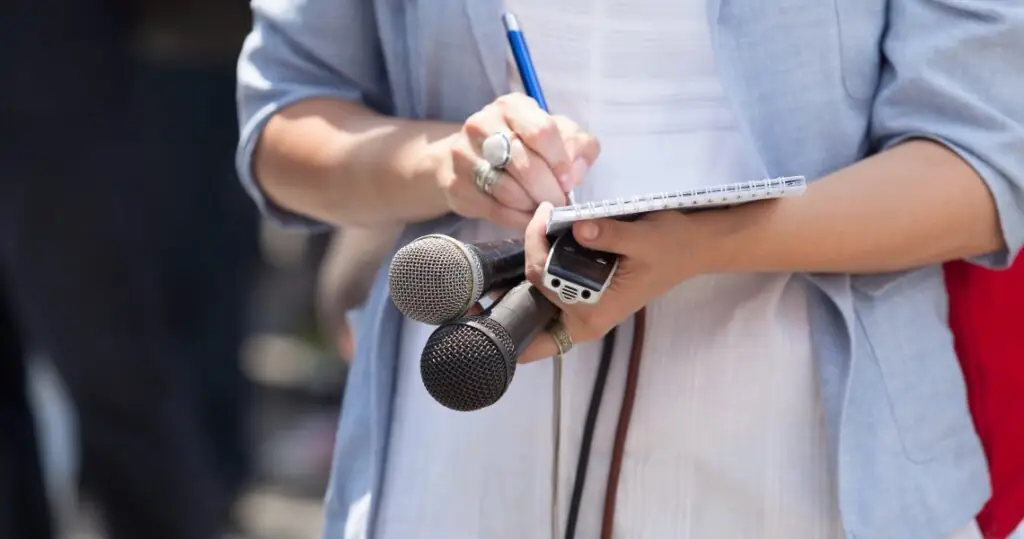
The concept of public relations can easily become confusing when defining it from an outside perspective. So, what is public relations really, and what does it include?
Some might assume public relations (PR) is simply anything having to do with the public’s perception of a brand and their relationship to it. While this is technically true in a very broad sense, public relations encompasses more than that—in fact, it can be the guiding light to or away from your bottom line.
Similarly, some people get turned around when the term “media relations” comes into the mix. It’s easy to assume its the same as public relations—after all, the words “public” and “media” both imply a connection with public image and a brand’s relationship with consumers. Some might be under the impression that PR consists of media relations. But understanding the difference between the two—and watching them work together to accomplish your goals—is key to a successful marketing campaign and, ultimately, your ROI.
The concept of media relations falls under the umbrella of public relations. However, media relations accomplishes a very specific goal of getting in direct contact with the media in order to lock down coverage. It is typically the most visual and far-reaching branch of public relations. Any time a representative from your company is connecting with a reporter, editor, or journalist, they’re performing a task of media relations.
In many situations, media relations efforts are not a singular act of getting in contact with the press. Media relations specialists work very hard to create lasting relationships with the media, so they can easily distribute messages and announcements for future campaigns.

Public relations (PR) is an umbrella term encompassing all efforts to communicate a message to the masses. While a good PR strategy relies heavily on effective media relations, there is a lot more that goes into it.
In very simple terms, public relations is the process of taking a message and amplifying it through digital, social, internal, and community channels. To that end, community partnerships are a major aspect of public relations that can go a long way in building lasting community relationships and a positive reputation.

No matter how you look at it, public relations and media relations both start from the same seed, a message. Sometimes that message is simply pushing a new product or service. Sometimes, it’s sharing a brand’s charitable actions or making a bold statement about a critical social matter. Either way, sharing your message in an effective way requires a lot more than just hitting “send” on an email and making a quick last-minute social post.
First, it’s important to define your goal and purpose behind sharing your message. Are you aiming to grow your audience and encourage sign-ups or purchases? Do you want to build (or fix) your brand’s reputation or establish your views and commitments to certain causes or platforms? Maybe it’s neither of those things—or maybe it’s a mix of everything. Either way, you need a clear goal in mind before you begin considering your public and/or media relations strategy.
Let’s say you’re a kitchenware brand releasing a new line of cooking supplies. But you’re not looking to simply promote with a few photos and ads—you want to create a story and make an impact. The holiday season is approaching, and you want to promote these new items with a family-friendly angle that encourages cooking and making memories together. But you don’t want to stop there—giving back to your community has always been a founding principle of your company, and you’re planning on giving a portion of every sale for a limited time to a local food bank.
Your public relations strategy will start with clarifying your goals—in this case, you have a specific number of conversions and sales you’d like to make. Perhaps another goal is to raise awareness for your charity of choice—maybe you’ve even partnered closely with them to establish a donation goal.
With those goals in mind, you can then begin to decide how you’d like to share your message with the community. If budget allows, maybe you decide to create a few short cooking segments to share on YouTube and/or social media. Maybe you set up a booth at a local home & garden show or other community event. Regardless, you’ll need to develop a plan for distributing your message via social media, news outlets, traditional advertising, and anything else that aligns with your budget and goals.
At this point, media relations taps in. You need a strategy for sharing your message with a large audience. This often starts with the distribution of a well-crafted press release. You’ll need to get in contact with reporters at local publications and ask them to run stories or features on your brand and how you’re connecting with your local charities. You may even secure a segment on a local news show, where you can cook something with your products while plugging your fundraising campaign and encouraging sales.
Once your campaign has kicked off, the media is buzzing and the orders are starting to come in, you can begin to evaluate your ROI. Keep in mind that there are many intangibles with public relations, not all measurable, so don’t discount the positive relationships established with your community and good old fashioned brand awareness.
Whatever that ROI looks like for you, a strong PR strategy—including a solid media relations plan—will help you get there.
Still unsure about the difference between public relations and media relations? Let’s talk about the role of each, and how we can help you with both!